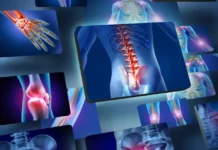 MUMBAI: Surgery in ancient India was very advanced and Sushruta, the “father of surgery,” described qualities of a good surgeon in his book ‘Sushruta Samhita’, a doctor said at the 102nd Indian Science Congress (ISC) here.
MUMBAI: Surgery in ancient India was very advanced and Sushruta, the “father of surgery,” described qualities of a good surgeon in his book ‘Sushruta Samhita’, a doctor said at the 102nd Indian Science Congress (ISC) here.
The book is an important classical Sanskrit text on medicine, Dr Ashwin Sawant said during a symposium at the ISC underway here while delivering a lecture on ‘Ancient surgery in ancient India’.
“Sushruta was the first medical person to use leeches in medical treatment. In the last two decades, the FDA of United States has accepted leeches as a medical device,” he said.
Sawant spoke of reference to surgery in ancient India, found in Rigveda and Atharvaveda. A drilled tooth dating back 7,000 years was found at a place now in Pakistan, the Mumbai based General Practioner said.
“Sushruta was the first to say that the human heart is the centre of the body’s circulation system. However, we give credit to William Harvey for the discovery of the circulation of blood,” he said.
“The surgical instruments in ancient India were so sharp that they could split a human hair,” Sawant said.
Sushruta had explained 20 types of surgical procedures to be performed, he said.
There is a great similarity in ancient Indian medical instruments like forceps and scalpels and their modern counterparts, Sawant said.
“He pointed out 107 ‘marmas’ (vital spots) on human body which the modern surgeons are unaware of,” he said.
Sushruta’s book has reference to use of wines and hemp (bhaang) as anesthetic in surgery. He also spoke of maintaining the natural color and texture of a scar which is still uncommon to modern surgery, he said.
During the symposium, Dr Rahul Altekar spoke about the ‘scientific principles in ancient Indian architecture and civil engineering’, while Dr Leena Phadke spoke about ‘neuroscience of yoga’. -PTI






